
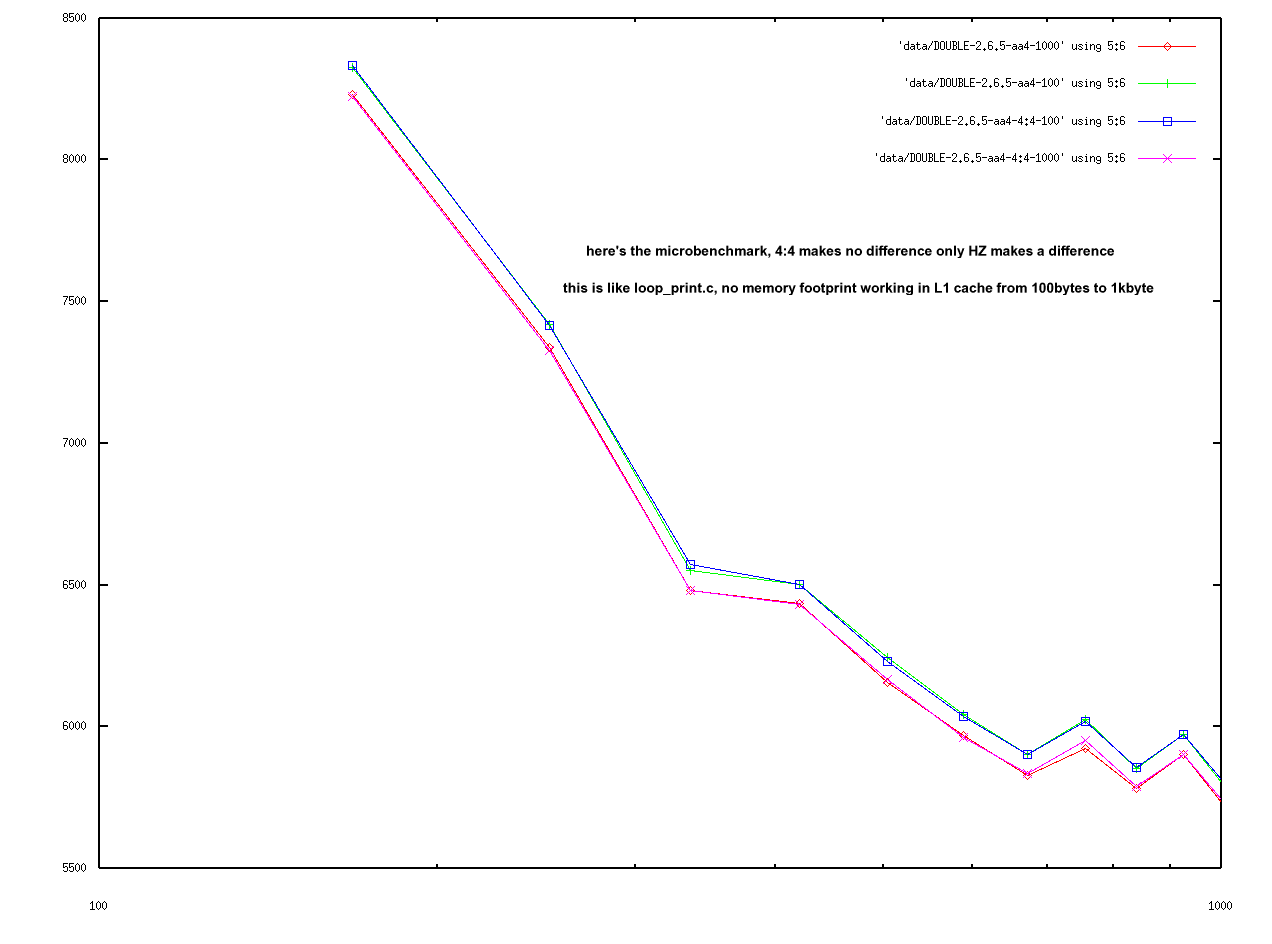
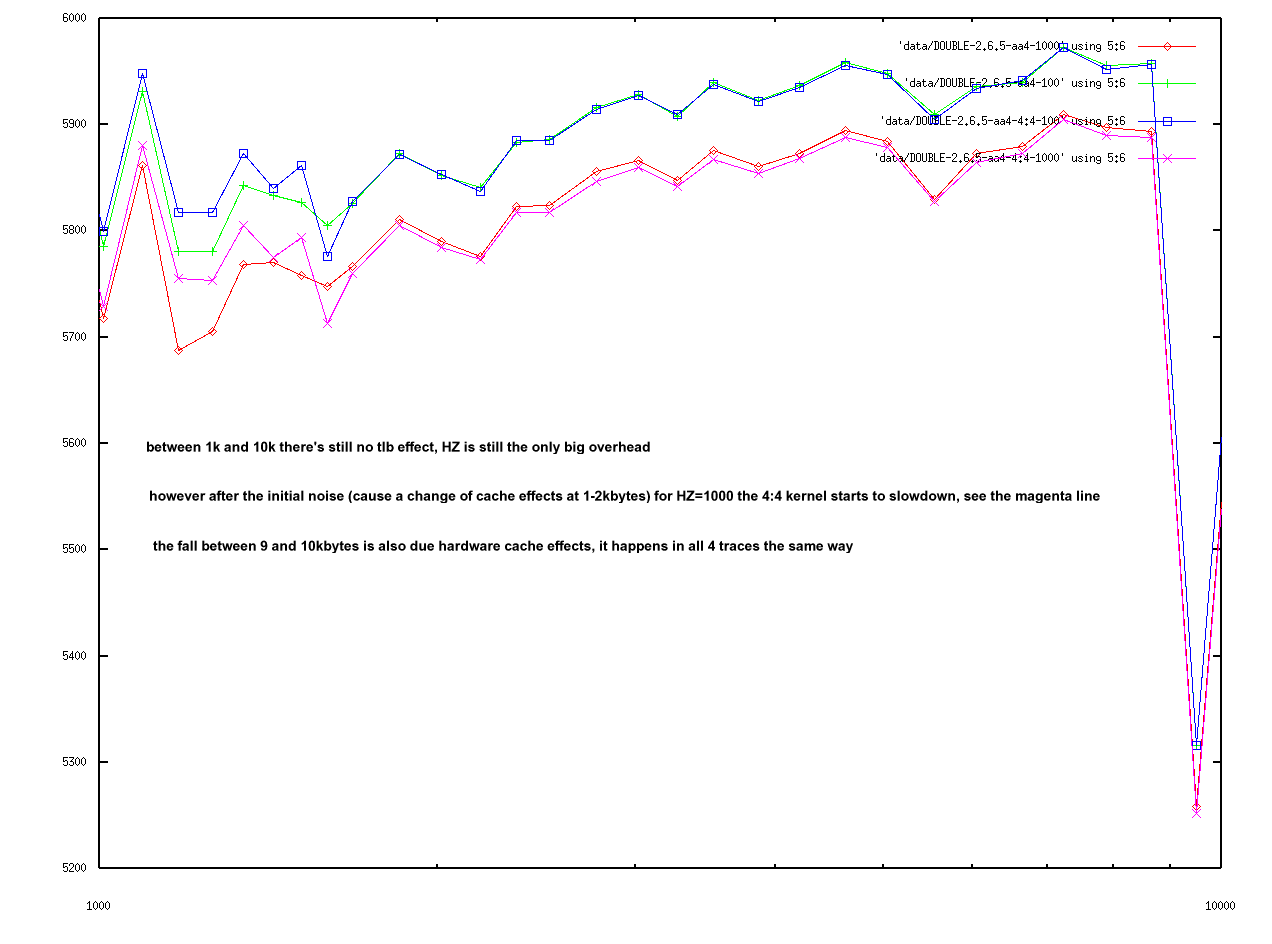
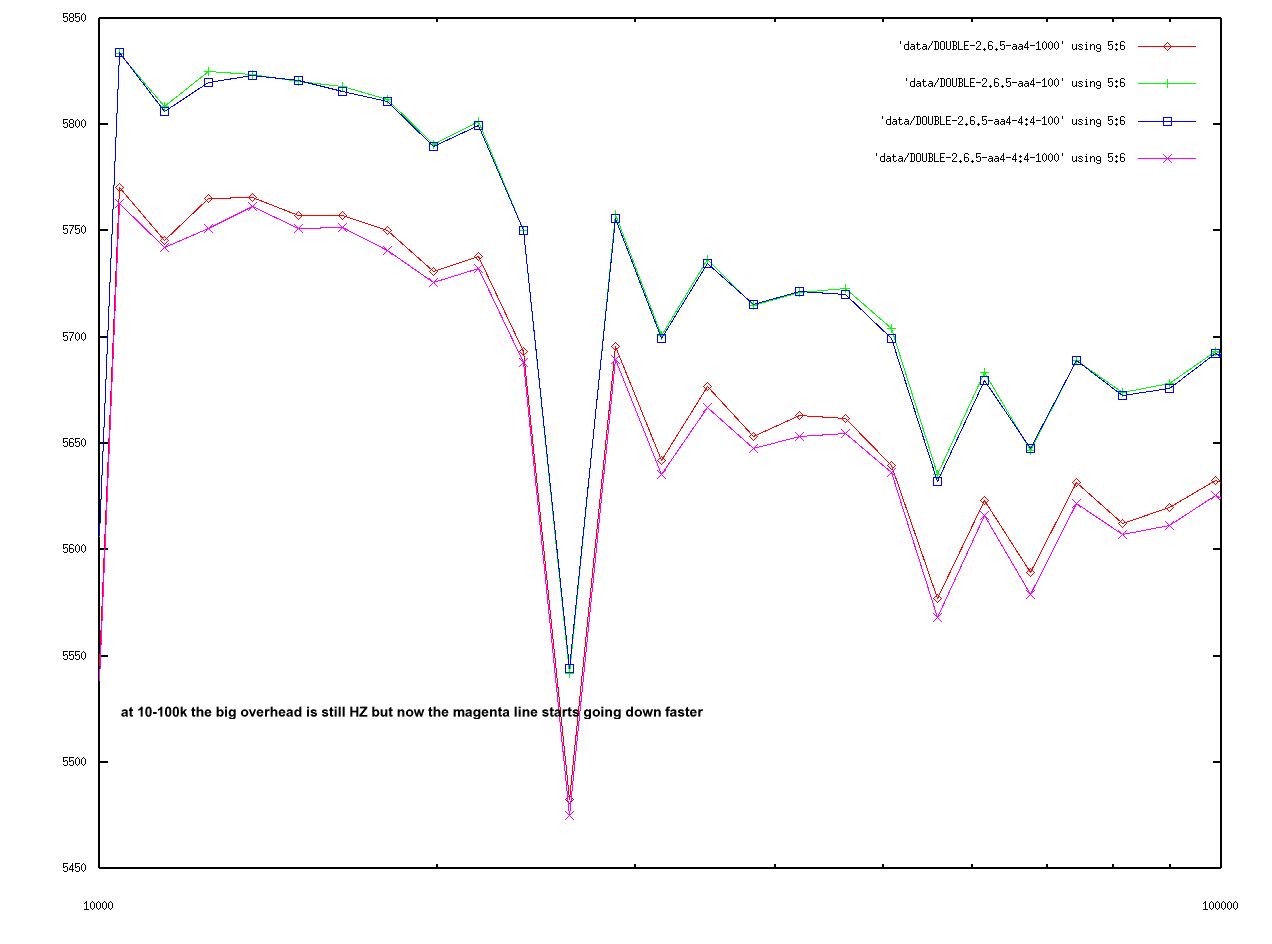
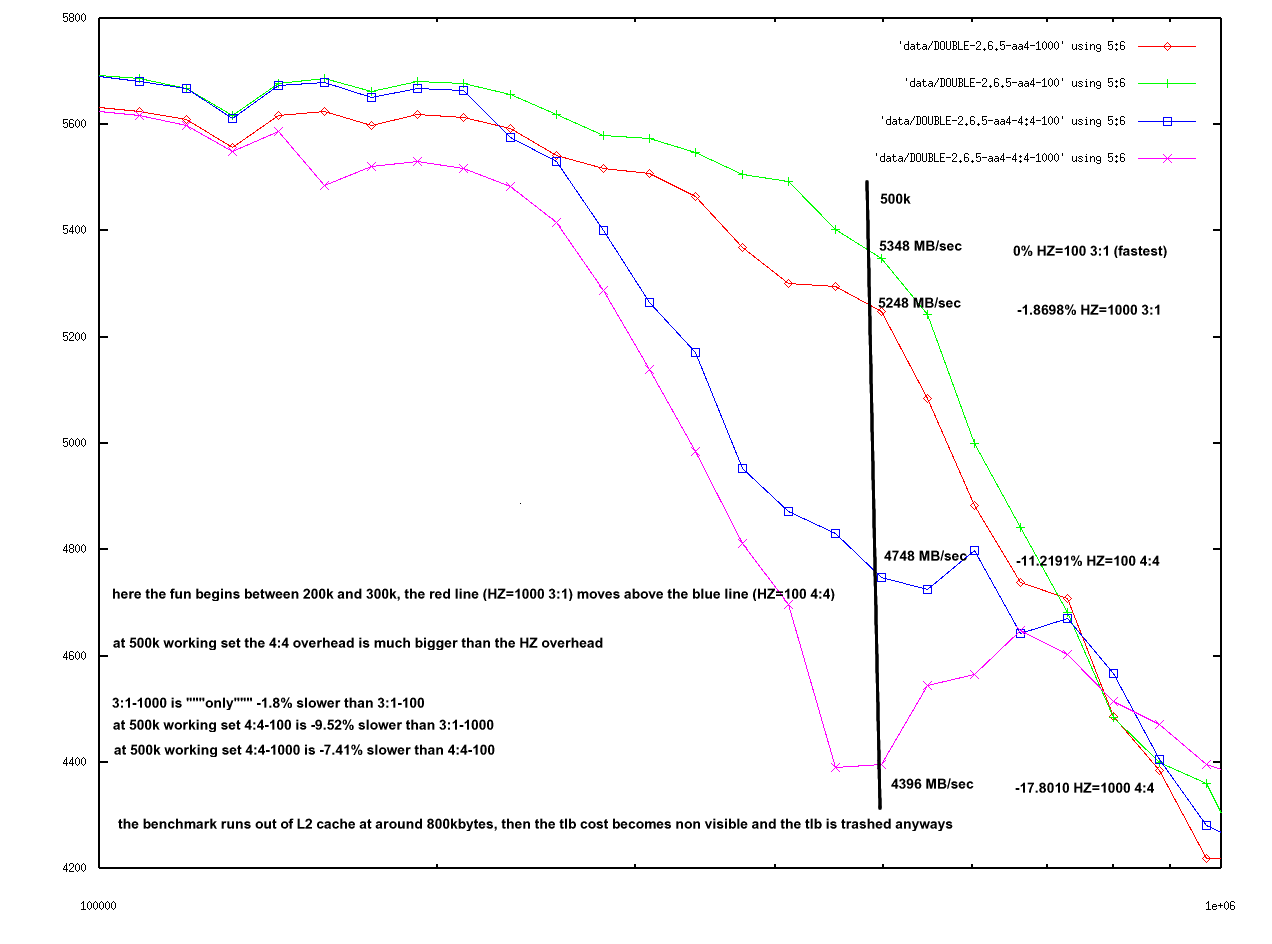
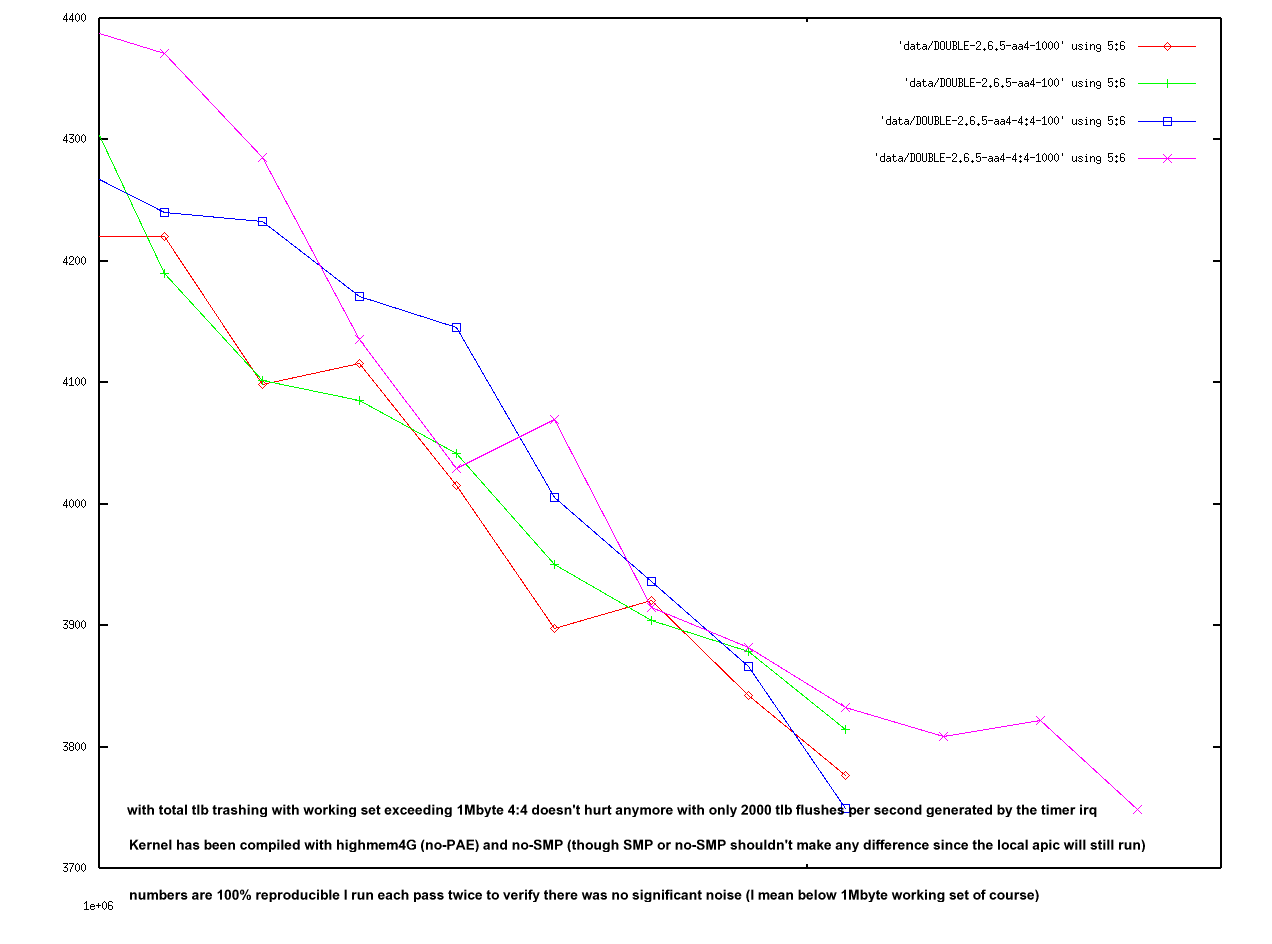
In very short the HINT benchmark simulates some realistic number crunching purerly userspace workload at different working set sizes.
I'm plotting the working set size on the X axis, and the memory bandwidth generated by the CPU using each working set size on the Y axis. The higher the memory bandwidth at any given working set the better.
Some comments are embedded in the images.






Depending on the number crunching working set HZ=1000 may generate up to a -7% slowdown compared to HZ=100 if the 4:4 option is enabled. (this again happens exactly at 500kbtye working set for my hardware)
If the memory footprint is below and above a certain threshold (below 100k and above 1M for my hardware) 4:4 or 3:1 doesn't make any difference for purerly userspace load with not more than 1000 irqs per second and zero syscalls and zero page faults.
Obviously with different tlb/cache sizes and cpu variations the threshold numbers will vary.
These results are 100% reproducible for me. The HINT is under the GPL so you should find it on the internet (if not feel free to ask me for a copy).
andrea@suse.de